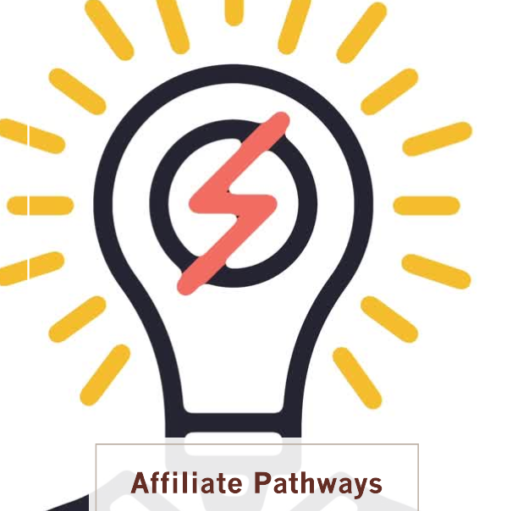
A Brief Background
It is one thing to rush into something on impulse and another to, first, reflect calmly on the myriad of options and consider the best course of action. Presently, there is a mad rush to adopt AI or at least an inclination to think that AI can solve all our problems, not just content creation but all of life’s great problems: disease; hunger; poverty; and so forth. AI is the the fourth industrial revolution. Like the first, second and third one, the fourth has generated much euphoria.
That at the moment is the current situation — unsurprisingly, therefore, everyone is looking for a new angle on old problems. Who can blame them? Part of the problem is the seductive image of AI — there is a certain mystique about it that charms us all. All rational thought melts way at the mere whisper of AI.
Leaving all that aside for the moment, we need to make a distinction between AI-assisted and AI-generated. AI-assisted suggests some degree of application. Whereas, AI-generated implies comprehensive application from start to finish without any human agency whatsoever.
To cut through all this background noise is no easy task. And, so I suggest that we nail it to a central question: What specific tasks are best served by AI in affiliate marketing?
The answer to that would be . . .
Why Do We Even Need AI?
We need ranking key words for our content, so that we can be before our prospective audience more often. CAVEAT: Google, however, looks suspiciously at keyword-stuffed content and considers this as ranking manipulation. So, even if we had the world’s biggest list of key words, a reckless use of it will not get us to our destination: decent ranking.
We still need to be able to form decent sentences with our key words in a relevant manner to be ranked. Our content still needs to be readable and meaningful to their human readers. AI-detection tools deployed at the discretion of Google might reject our content. Thus, for the most part, we are left to our skills — and, that is not such a bad thing either.
A variety of written forms with a decent amount of ranking key words in all the right places — sentence positions — is the safest bet, I would say. Our advantage over machines is subjectivity — consciousness. Let us not underestimate its powers. Only humans at this time can live in the moment and experience it. This gives us a tremendous advantage in producing unique content. Use it . . . use it or lose it.
However, searching for keywords is a dull mechanical process that no human should have to carry out. Why not delegate it to AI which does not have our human limitations of boredom? AI is not immune to tediousness. Why not free yourself from this drudgery to focus on what you do best, creative work?
Not only can AI help us find high ranking key words, but by doing so it can help us optimise our content, a task that you have to attend to on an on-going manner. Optimisation is constant adjustment to achieve the best result possible.
How And Where Can We Use AI Effectively?
A conception you need to familiarise yourself with is task definition. Defining the task is half the task. The sharper the definition, the more executable it is — because every task definition is also an implicit plan for its execution. That is how machines think.
We can adopt this for our purposes. For example, in producing long-form content for a particular project, you can break it into a central question: What really needs to be done? — producing a report on, say, an affiliate program that enables new mums to generate income from home. That is the broad task definition. We can break this up into smaller tasks:
- finding key words — e,g,”mum”; “stay-at- home-mums”
- creating readable and relevant sentences — e,g,”Stay-at-home mums need as much extra income, especially since they are raising a child”
- growing this first sentence into succeeding sentences to form a paragraph . . .
- then, generating more paragraphs for this first one; and so on.
The earlier exercise in sentence generation in the previous post would be helpful in the last sub-task.
Build Your Own
You can create a rough template of your own for executing tasks (any task, not just this one) which may look something like this:
- Define task broadly.
- Define task more narrowly.
- Identify specific subtasks.
- Execute.
Actually, that may be exactly how our brains work any way. What I am describing may be a retrospective analysis of how we conceptualise and carry out tasks in our everyday lives. Regardless of whether we use commercially designed workflows and templates (and, God knows there are many on the market), the principles are still the same. In fact, ours is a simple if not oversimplified model of human thinking.
The point is this: we do not necessarily need to use technology — technology for technology’s sake, especially — when we have such a wonderful gift: the innate ability to think.
One thing I need to point out about this model of task execution is that it is generic, not specific — it describes broadly what the movement from conceptualisation to outcome might look like. The analogy with writing is particularly applicable here. You may recall that I had stated that writing tasks cannot be described beyond a certain point without executing them for the writer. The same principle applies here; we cannot describe task definition beyond a certain point without executing it.
For example, between the different stages of task definition there may be an infinite range of sub-tasks. And, while this is generally true here 1-4, it is particularly true in moving from 3-4: these sub-task may have sub-tasks of their own.
But this is no cause for dismay. In fact, this is where — in the in-between regions — that creativity and discovery flourish — in figuring out minutely what the micro tasks are, you will probably end up executing them. It is that sort of problem.
The machine you are looking for has already been invented: you.
Data
At this stage in your enterprise, the main objective is to generate data — simply put, what works and what does not. Work from that basic conceptualisation.
For example, when you apply AI to find key words and start implementing them in your long-form content, you will notice some data coming in. You need to constantly harvest this data to make your content work better — optimisation, in other words. Get into the habit of reviewing the data as soon as it is available — and please be patient, it takes a while to get good data.
Using whichever platform you may be subscribing to it may be possible to zero in on the demographics — which part of the audience (age; gender; income; education) did it resonate with most? Using the Pareto principle (you might find that 20% of your key words are getting 80% of the engagement), you can refine this process further.
Then you can start differentiating your audience — this is called segmentation — and refine your targeting accordingly. One consequence of segmentation could be how to formulate your statements effectively. For example, some demographic may respond more positively to personalisation: “Hey,Julie,” rather than “Dear Ms. Julie.”
As you may gather, long form content requires subtlety, nuance. Gradually, you will discover how to exude empathy and to what degree. Even with AI — which can only gather the data for you — this comes down to human judgement. However, you can explore with how AI how, and to what degree a particular audience reacts. This is what we want to leverage to drive traffic and ranking.
Before I Go . . .
I would like to share something with you — a post published today by Kyle Loudon, one of the Co-Founders of Wealthy Affiliate. I want to share this post not only because I have great respect for Kyle’s integrity but also because what I have said here today in this post aligns uncannily with Kyle’s.
See here Kyle’s Post pictured below.

